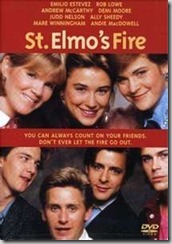Welcome to the You Economy. PS, if you’re a “creative entrepreneur” you’re already part of the movement.
At Red Slice, one of my values is that creativity and cash flow are not mutually exclusive. We’re seeing it all around us in the New Economy: people building brands based on a social mission; billionaires supporting philanthropy and profits at the same time – and thousands of small businesses and “solopreneurs” creating positive change, healthy businesses and meaningful lives.
Tara Gentile is a crusader in this mission – with a different slant. She’s a writer, speaker and business coach leading what she terms the You Economy. What does that mean? “I’m redefining the whole business paradigm as the exchange of commerce, experience, and meaning so that my clients can earn more while making their customers’ lives richer.”
See? Passion, profits and doing good can all co-exist. Tara is living proof: “I’m an aspiring theologian turned business thinker. I’m the daughter of a creative entrepreneur – though she didn’t realize it at the time – and the mother of a daughter I can’t imagine will be anything but!”
Tara’s the author of The Art of Earning – a guide to rewriting your personal money story for the New Economy. And if you’re a small business or solopreneur, help her spread the word about the power of microbusiness by completing the $100 Million Microbusiness Survey.
RS: Tara, welcome! Please tell us about what your do for entrepreneurs and what you see as the biggest barrier to small business success.
TG: I enable people to discover what is really valuable about what they do. We most often get into business for ourselves but our self-interested motivations don’t cut it when it comes to really developing a business that works! It’s all about seeing things through the customer’s eyes. That takes some experimentation, insight, and confidence. It’s also takes getting out of your own head and into someone else’s.
The biggest barrier to success for small business owners is themselves! Business owners get so caught up in doing things “right” that they forget to do what works best for themselves and their customers. I find there is still an immense amount of fear in doing business, as well. Fear keeps you from clearing your schedule to work on your latest & greatest idea, it keeps you from trying something new to engage your customers in a new way, it keeps you from offering the product or service that will make your business go from surviving to thriving.
RS: What is the $100 million microbusiness survey and how did it come about? What do you hope to achieve or find out?
TG: The $100 Million Microbusiness Survey is an attempt to gather data on $100 million of economic activity by microbusiness owners. Because we tend to measure our business production in terms of “salaries” and not revenue that’s streaming into the economy, we sell ourselves short.
In 2009, 95.5% of US businesses were microbusinesses. In 2008, $265 BILLION of net income was achieved through sole proprietor businesses in the United States. In 2009, $837 BILLION worth of sales were generated by non-employer businesses in the United States. Yet, we know very little about these kind of businesses.
My goal with the survey is to better understand who these business owners are, what difficulties they face, and maybe – just maybe – how we can help them to achieve their dreams through media awareness & government policy.
RS: Great stuff! PS, everyone with a microbusiness reading this should take the survey now and let their voice be heard. In your opinion, what is the future of small business success in this country – or even worldwide? Any juicy trends or predictions to share?
TG: The future of business in the United States – and around the globe – is small business. More specifically, the future is microbusiness. My “juicy trend” might seem like a downer but really it’s quite optimistic: the jobs aren’t coming back. Our economic production will continue to grow through technology, not human resources. If we want people to be earning real money in fulfilling ways, we need to plug them into real businesses.
Those businesses may represent ways in which they would have been employed in the past (think freelancers earning more with greater flexibility) or they could be in new fields, serving people in new ways. Government needs to make it much easier for us to take agency over our livelihoods. We need health solutions that work, tax solutions that work, child care solutions that work, investment solutions that work. And we need it now. We, the microbusiness owners, will pull us out of this downward spiral. We are the New Economy.
Connect with Tara Gentile on Twitter or Facebook. And please take and share the $100 Million Microbusiness Survey today.



